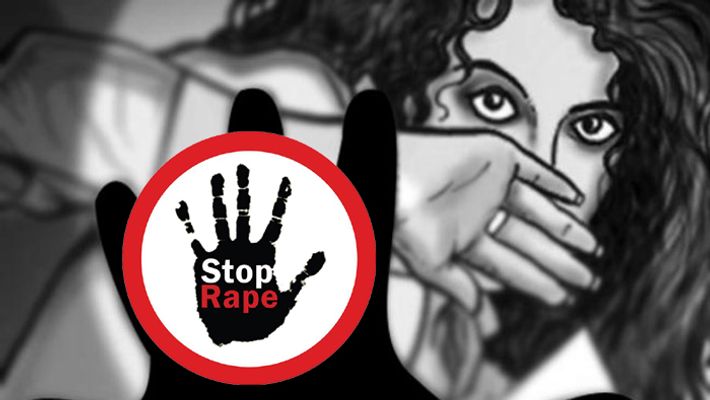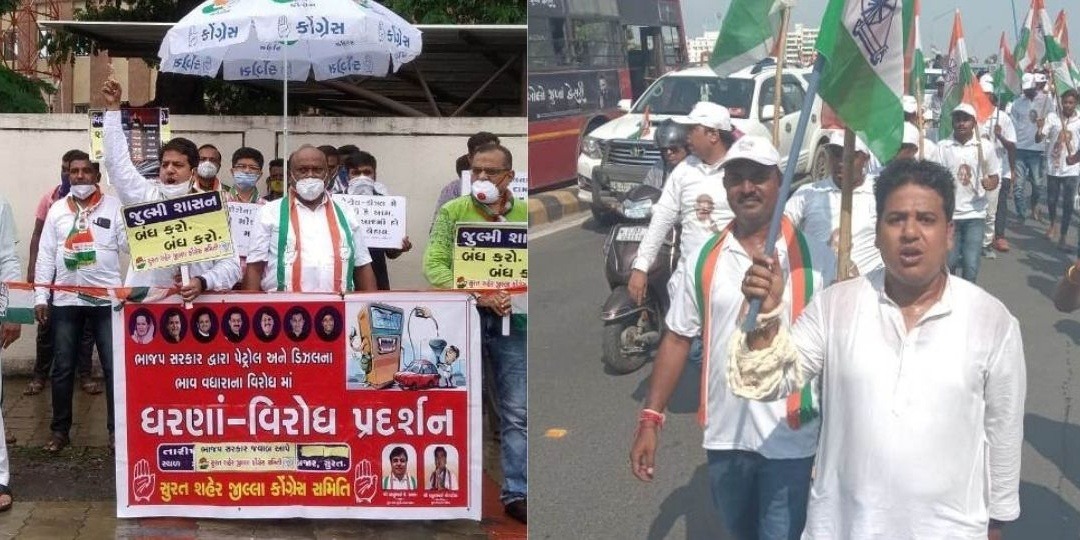
From Mismanaging COVID-19 to Worsening Economic Distress, Government Missteps Abound
The politics of the RSS-BJP combine is responsible for the current state of the economy — the unprecedented decline of the GDP to -23.9 per cent — and the immiseration of the country’s toiling people. Barely a year ago, Finance Minister Nirmala Sitharaman said that the goal of a $5-trillion economy by 2024-2025 was realisable. Last week, the FM invoked the notion of an “act of God” while shrugging off the Centre’s responsibility of payments to states under GST.
The COVID-19 lockdown was declared in the last week of March, even though India reported its first infection at the end of January. The government was busy making preparations for US President Donald Trump’s India visit. The BJP and RSS were aggressively breaking anti-CAA protests across the country, especially in Delhi, and polarising the people on communal lines.
There is no doubt that COVID-19 has engulfed the entire world in just a few months. The closure of industrial units and the complete halt of air, rail and road traffic added to the woes of an economy under strain. But the government had received several warnings about the looming crisis. The CPI had warned it about a recession and pointed out that the so-called reforms — commercialisation of education and health, privatisation of public sector undertakings, reckless liberalisation to allow foreign capital in virtually every sector — are not the solution to what ails the economy.
For the BJP gives us a sense that Covid-19 is already destroyed under the sheer weight of mammoth numbers that ministers and party leaders keep touting— Rs 20 lakh crore (economic/political/psychological) package; food grains for 80 crore people; 1.25 crore migrant workers sent home safely with the Centre footing ‘80 per cent of the train fare’; 130 crore people clapping and clanging thalis to scare the virus away.
With India becoming the third worst-hit country by the coronavirus, Indians feel the Modi government’s handling of the pandemic is its biggest failure.
“In order to give the coronavirus a scare, all you have to do is to come in contact with a BJP leader, on the television, or on the internet.”

Rising Atrocities on Women
In just four years, crimes against women increased in Uttar Pradesh by over 66%
Registered cases of crimes against women have consistently risen nationwide since 2015, according to a 2019 report.
As controversy and anger over the alleged gangrape of a Dalit woman by Thakur men in Hathras in Uttar Pradesh continue to smoulder, the latest crime data show that the state recorded the highest increase in crime against women, at 66.7%, in four years to 2019.
Overall, the crime against women increased by 23.3% in the last 6 years.
Although more crimes against women were reported, the investigation and prosecution of these cases was tardier than other categories. By the end of 2019, investigation was pending in a higher proportion of crimes against women – 33.8%, as compared to 29.3% of all cognisable IPC crimes. A trial had been completed in only 7.6% cases of crimes against women.
At rallies in Delhi in 2013, the Bharatiya Janata Party’s prime ministerial candidate, Narendra Modi, reminded his audiences why they should vote for his party – remember the gangrape of December 16, 2012, which happened under the Congress’s watch, he said, remember the “rape capital” tag that was now attached to the city, remember the water cannons used on protests against the rape.
Cut to 2019 and Modi has been in power for over five years. Another rape, this time in Unnao in Uttar Pradesh, another woman brutalised as she approached the courts for justice, another round of protests in Delhi. The Delhi Police, controlled by the Centre, are still using water cannons to break up protests.
In between lies a story of political failure.
In 2012, as public protests broke out over the gangrape of a young medical student, the United Progressive Alliance government appeared unprepared and inadequate to deal with popular rage. A new law, which broadened the definition of rape and prescribed more stringent punishement, was not enough to stem the tide. It eventually swelled into rage against the government itself. The BJP capitalised on this, repeatedly invoking “Nirbhaya”, the name given to the woman who was savaged on a moving bus in Delhi, in its campaign rallies. It promised a new era of accountability for such crimes, to break the status quo in which they had been routinised and accepted.
But the recent death of a 23-year-old woman from Unnao shows that the impunity which had maintained the old status quo is going nowhere. The woman, who alleged she had been raped by two men, died after being set alight. She had been on her way to court when five men attacked her and doused her with kerosene. She reportedly ran for a kilometre afterwards and told the police her story. Her attackers were none other than the rape accused who were out on bail.
Chief Minister Adityanath’s government in Uttar Pradesh has failed in Unnao before. In August 2019, the BJP expelled its legislator Kuldeep Singh Sengar, two years after he had been accused of raping a minor, and one and a half years after the girl’s family tried to immolate themselves outside Adityanath’s residence, only to be rounded up by the police. Only after two members of the girl’s family were killed and she was left battling for life in an accident widely believed to be engineered by the accused, did the party act against Sengar. While the police arrested Sengar on charges of rape and criminal conspiracy, the murder charges against him were dropped.
Even more shockingly, in September, the Uttar Pradesh police went on to arrest a law student for extortion after she filed a complaint against BJP leader Chinmayanand, alleging he had raped her for a year.
The list goes on. In Arunachal Pradesh, a woman filed a rape charges against a local BJP legislator. In Jammu’s Kathua district, BJP leaders helped organise support for men accused of raping and killing an eight-year-old girl in January 2018.
In case after case, it is the same story: accusers facing the brunt of police action rather than the accused, a failure to protect vulnerable complainants, cases slow to be heard. Political will to ensure accountability is especially weak when the accused are embedded in structures of power, either because they belong to the ruling party or because of their position in entrenched caste and class hierarchies.
Since 2014, the BJP has made no visible effort to ensure the existing laws against rape were implemented. It was only in 2018 that money from the Nirbhaya fund was allocated for measures to improve women’s safety and set up fast track courts for rape cases. But utilisation rates remain dismal.
When four men accused of raping and burning alive a young veterinarian from Hyderabad were killed in an extra-judicial police encounter, crowds celebrated. It spoke of a chilling public bloodlust but it was also a grim reflection of just how broken the system remains. Seven years after the December 16 gangrape, nobody expects the regular processes of justice – of complaint, investigation, trial and conviction – to work.
“Do you still think BJP actually believes in its campaign Beti Bachao Beti Padhao”?

Rising Unemployment and Inflation
India’s unemployment rate rises to 7.7% in December: CMIE
Back in 2013, at the height of his Lok Sabha campaign, Narendra Modi, then BJP’s prime-ministerial candidate, swore at a rally in Agra that his government — if elected to power — would create 1 crore jobs annually. Barely four years later, the reality check should come as a cold shower. The country’s unemployment rate has risen to a five-year high of 5 per cent in 2015-16, according to the latest annual household survey on employment conducted by labour bureau.
The steady deterioration of the economy under the current PM’s team from the fairly stable position bequeathed to him by our government in 2014 has not escaped the notice of commentators. As per labour bureau figures, India added just 1.35 lakh jobs in eight labour-intensive sectors in 2015, compared to the 9.3 lakh jobs that were created in 2011.
And it is an established fact former PM Manmohan Singh’s tenure saw the most successful implementation of the anti-poverty programme with the highest number of people exiting poverty. Add to that the manufacturing jobs created were at an all-time high.
In contrast, the Modi government’s efforts at job creation, despite its many programmes, are floundering. Make in India has remained sluggish due to the failure to generate investment in manufacturing. The parliamentary standing committee of commerce indicated that “the manufacturing sector has grown only by an average of 1.6 per cent in the last 5 years till 2015-16”.
Six out of India’s 10 states with the highest unemployment rate are either ruled by the BJP or it is an alliance partner with regional parties
When Demonetisation deflated economic growth by finishing off the unorganised sector, the BJP had cited low retail inflation as a mark of economic stability. Even after a hastily implemented GST regime further derailed the growth engine, this was cited again as a mark of the Narendra Modi government’s control over the economic situation.
Back in 2013, at the height of his Lok Sabha campaign, Narendra Modi, then BJP’s prime-ministerial candidate, swore at a rally in Agra that his government — if elected to power — would create 1 crore jobs annually. Barely four years later, the reality check should come as a cold shower. The country’s unemployment rate has risen to a five-year high of 5 per cent in 2015-16, according to the latest annual household survey on employment conducted by labour bureau.
The steady deterioration of the economy under the current PM’s team from the fairly stable position bequeathed to him by our government in 2014 has not escaped the notice of commentators. As per labour bureau figures, India added just 1.35 lakh jobs in eight labour-intensive sectors in 2015, compared to the 9.3 lakh jobs that were created in 2011.
And it is an established fact former PM Manmohan Singh’s tenure saw the most successful implementation of the anti-poverty programme with the highest number of people exiting poverty. Add to that the manufacturing jobs created were at an all-time high.
In contrast, the Modi government’s efforts at job creation, despite its many programmes, are floundering. Make in India has remained sluggish due to the failure to generate investment in manufacturing. The parliamentary standing committee of commerce indicated that “the manufacturing sector has grown only by an average of 1.6 per cent in the last 5 years till 2015-16”.
India’s unemployment rate rises to 7.7% in December: CMIE
Six out of India’s 10 states with the highest unemployment rate are either ruled by the BJP or it is an alliance partner with regional parties
When Demonetisation deflated economic growth by finishing off the unorganised sector, the BJP had cited low retail inflation as a mark of economic stability. Even after a hastily implemented GST regime further derailed the growth engine, this was cited again as a mark of the Narendra Modi government’s control over the economic situation.
“Banks are in trouble and so is the GDP. Inflation was never so high, nor was unemployment. The morale of the public is crumbling and social justice is being crushed every day. IS INDIA MOVING TOWARDS DEVELOPMENT OR DESTRUCTION ?

Recent Comments